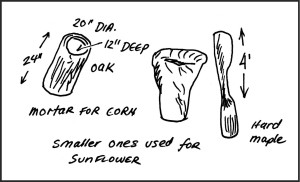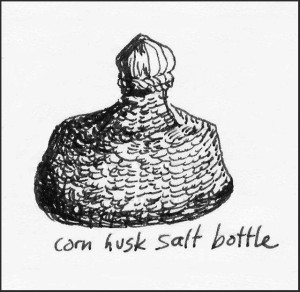The Iroquois were masters of craft and tooling in their pre-European era. Their objects made from the natural materials of their homeland in the Northeast forest and lake country were durable, beautiful, and practical. These skills came under pressure after English and French introduced trade goods of metal, glass, and cotton, yet after difficult transition periods for the Iroquois, even to this day the people of the Six Nations – the Haudenesaunee (People of the Longhouse) continue to employ traditional designs and manufacture in their crafts and ceremonial objects.
The inspiring historical fantasy novel BARBARA REILLY is set partly in the time period in which the Iroquois were under their greatest cultural pressure. This was during the American Revolution, in 1779, when the Colonies were fighting for independence from England. At this time, in the story a small group of Cayuga people make a supreme effort to protect a small part of their culture for the future.
Barbara moved around the room, entranced but not touching, her hands clasped behind her like in the classroom game Huckle Buckle Beanstalk. There were baskets and bowls of glass beads, bone and shell beads, nuts, husks, feathers, seeds, porcupine quills, stones, yarn, twigs spooled with thread, dried berries and flowers, and powdered colors. There were also needles, awls, knives, and various sized mortars and pestles. Around one side of the curved wall were bark barrels full of peeled bark and split wood strips, shocks of reeds, a wood-bending jig, as well as axes, hoes, coils of rope, snowshoes, and a large, unbelievably beautiful beaded bag. This took her breath away, as did the set of dolls below it on a bench, expertly crafted with their bright costumes, fine hair, and sewn husk faces. ~ From BARBARA REILLY
As author of this novel, and as one who lived in the lake country where the Cayuga lived, and who respected their traditional ways, I wanted to portray that life as accurately as possible.  To that end I made every effort to learn about the implements they crafted and used, as these figured prominently in the story. My research would take me to libraries and museums all over the region. Some of this is documented in other articles in the World of Barbara Reilly series of articles, found at my website www.carlgrimsman.com.
To that end I made every effort to learn about the implements they crafted and used, as these figured prominently in the story. My research would take me to libraries and museums all over the region. Some of this is documented in other articles in the World of Barbara Reilly series of articles, found at my website www.carlgrimsman.com.
 She stood at the doorway and gazed at the built-in bed laid with furs and blankets, the bags and trunks, moccasins and clothing, the buckets, kettles, and cups. She looked all around at the braided corn hanging, the beautiful peeled-wood frame of the building, and up to the smoke hole in the ceiling. ~ From BARBARA REILLY
She stood at the doorway and gazed at the built-in bed laid with furs and blankets, the bags and trunks, moccasins and clothing, the buckets, kettles, and cups. She looked all around at the braided corn hanging, the beautiful peeled-wood frame of the building, and up to the smoke hole in the ceiling. ~ From BARBARA REILLY
In this article I am presenting some of my sketches, drawn in the course of writing the first draft of BARBARA REILLY, in 1989-1990 (the novel was finally edited and published in 2012). Interestingly, accomplishing this in the era before Internet prompted me to get closer to the artifacts themselves. In my travels was able to handle actual objects, including fire-split bone and bits of pottery at historic village sites, as well as items in the storage room of a museum. And sketching the items even from the pages of a book turned out to be a second-hand way of feeling the work that went into making them.
It was the wigwam full of glass beads and carving tools, skins and richly hued cloth, the one with the benches, the beaded bag, and the dolls.
“Ahhh,” sighed Grampa, and sighed again. “Ah” was all he could say for some time.
They went around the room together. When they were at the door again, Barbara said, “I told you, didn’t I? Didn’t I, Grampa? How did all this get here?” ~ From BARBARA REILLY
As most of us who have tried out hands at crafting anything know, the process is rewarding on a primal level. And from that we are also better able, it seems, to appreciate better what has gone into making other handmade objects, whether it be jewelry, furniture, or the tools of everyday living. From there it is easy to see that the Iroquois traditions of design and craftsmanship are as pleasing and enduring as any ever made.
“My, my, will you look at this.” Grampa held an amulet up to the light by its delicate hide string. “Conch shell, from the looks of it, inlaid with silver. What a beauty. Barbara?”
She had scrambled to her feet and was headed out. “Keep looking if you want to,” she said haltingly.
“You all right?” his voice trailed after her, as his attention fell back to the amulet, on the circle of silver drops inside the ivory shell. He let its fringe of tiny purple and white beads play over his hand. ~ From BARBARA REILLY
Barbara lifted the bead-embroidered scarlet broadcloth dress from its fork on the house pole without a hint of apology. She felt it, heavy in her hands, drank in its stunning beauty. She held it up against her body. Then she saw the plain buckskin dress and leggings further along the wall, laid over a birch barrel. The only leather dress there. Fringed like the woman’s, but without feathers or color splotches. It seemed to call to her. She slipped it on over her green tee-shirt, without considering who might be pleased or offended. It fit. She pulled off her yellow rubber boots and her shoes, and her wet dungarees. She tied on the buckskin leggings. There were several pairs of beaded moccasins on one of the benches. She tried them till she found the most comfortable. Thrills sang through her. ~ From BARBARA REILLY
BARBARA REILLY can be purchased online at Amazon.com
This is the sixth in a series of articles exploring The World of BARBARA REILLY.
Illustrations and text Copyright 2013 Carl Grimsman, All rights reserved.









